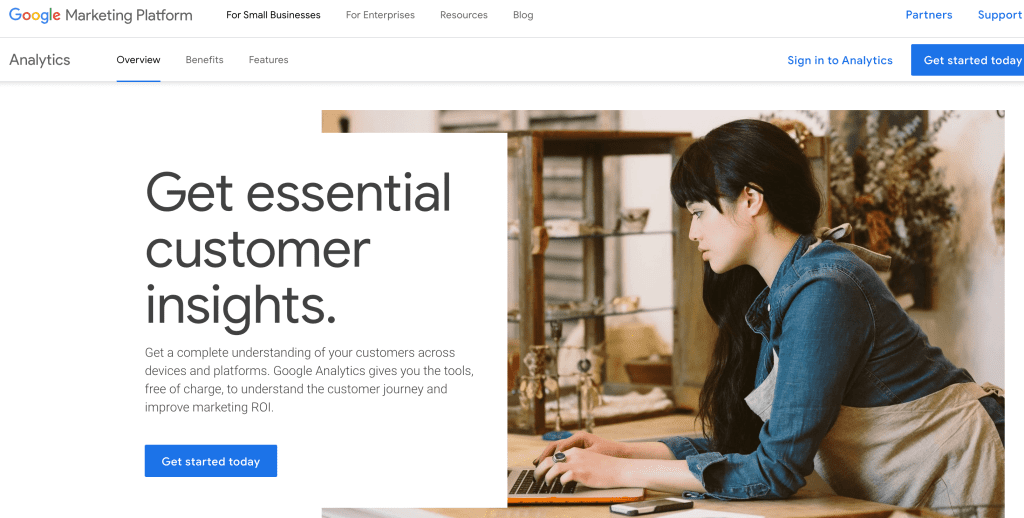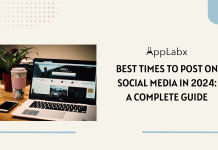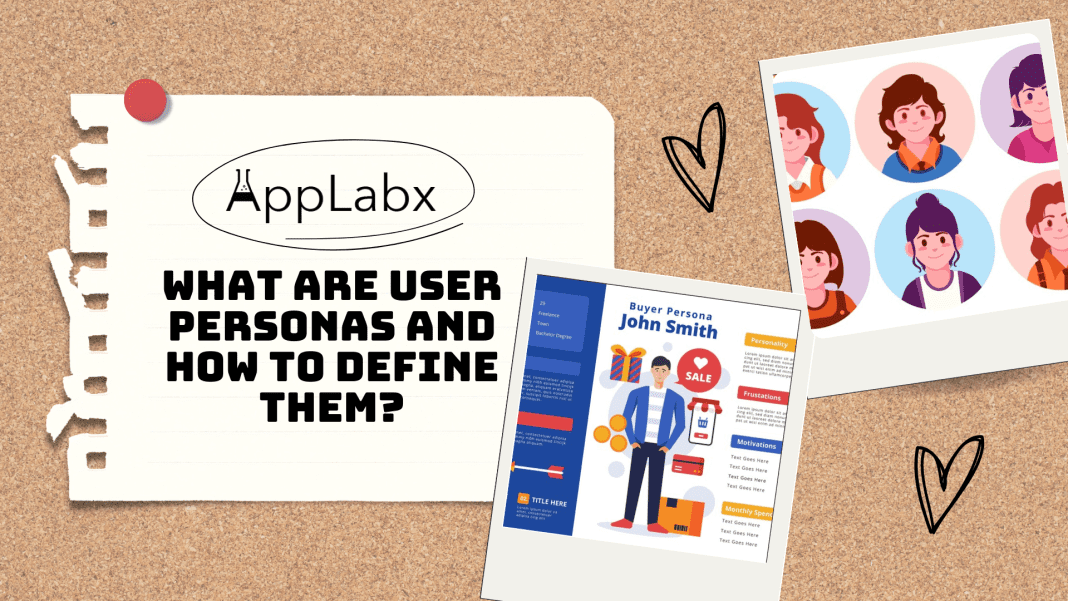Key Takeaways
- Unlocking Audience Understanding: User personas are strategic compasses for digital success, providing deep insights into audience preferences, behaviors, and expectations.
- Crafting Dynamic Personas: Crafting accurate and dynamic user personas involves data-driven decision-making, regular updates, and alignment with evolving market trends.
- Strategic Implementation for Impact: Implement actionable tips from real-world examples to elevate your digital strategies, enhance user experiences, and drive meaningful engagement with well-defined user personas.
Welcome to our comprehensive guide on “What Are User Personas and How to Define Them?” In the dynamic landscape of digital marketing and user-centric design, understanding your audience is paramount.
User personas serve as invaluable tools in this endeavor, offering profound insights into the preferences, behaviors, and expectations of your target audience.
In the vast digital ecosystem, where consumers are inundated with choices, user personas provide a strategic compass for businesses and marketers.
This blog will delve into the depths of user personas, unraveling their significance, and equipping you with the knowledge and tools to effectively define them for your brand or project.

The Essence of User Personas
User personas, in essence, are fictional characters crafted to represent the diverse segments of your audience.
They encapsulate demographic information, behaviors, motivations, and pain points, crystallizing a holistic understanding of your users.
Imagine them as the compass guiding your digital endeavors, helping you navigate the intricacies of user experience, content creation, and marketing strategies.
The Impact on User Experience and Marketing
The symbiotic relationship between user personas and user experience (UX) is profound.
Crafting a seamless, user-centric interface hinges on recognizing the unique needs of your audience.
From intuitive website navigation to personalized content, user personas form the bedrock of an enhanced user journey.
In the realm of marketing, user personas are the catalysts for precision.
Tailoring your messaging to resonate with specific personas amplifies the relevance of your campaigns, fostering a deeper connection with your audience.
As we unravel the layers of user personas, you’ll discover how they can be instrumental in optimizing your marketing endeavours, driving engagement, and ultimately, boosting conversions.
Navigating Through the Blog
This comprehensive guide is designed to be your go-to resource for understanding and implementing user personas.
We’ll journey through the conceptual foundations, exploring real-world examples of industry leaders harnessing the power of user personas to elevate their strategies.
But this isn’t just a theoretical discourse. We’ve meticulously curated actionable steps, ensuring that by the end of this guide, you not only comprehend the significance of user personas but also possess the tools and insights to define them effectively for your unique context.
Why Should You Care?
In a digital landscape saturated with information, your ability to cut through the noise and resonate with your audience defines your success.
Whether you’re a seasoned marketer, a budding entrepreneur, or a web designer, the principles of user personas are universally applicable.
So, buckle up for a journey into the heart of user-centricity. By the end of this guide, you’ll not only grasp the intricacies of user personas but will be empowered to apply this knowledge, elevating your digital presence and forging meaningful connections with your audience.
Embark on this exploration with us, and let’s unravel the world of user personas together.
But, before we venture further, we like to share who we are and what we do.
About AppLabx
From developing a solid marketing plan to creating compelling content, optimizing for search engines, leveraging social media, and utilizing paid advertising, AppLabx offers a comprehensive suite of digital marketing services designed to drive growth and profitability for your business.
AppLabx is well known for helping companies and startups use user personas to drive web traffic to their websites and web apps.
At AppLabx, we understand that no two businesses are alike. That’s why we take a personalized approach to every project, working closely with our clients to understand their unique needs and goals, and developing customized strategies to help them achieve success.
If you need a digital consultation, then send in an inquiry here.
What Are User Personas And How To Define Them?
- Understanding User Personas
- Benefits of Defining User Personas
- Steps to Define User Personas
- Tools for Defining User Personas
- Common Mistakes to Avoid
- Tips for Using User Personas Effectively
1. Understanding User Personas
User personas serve as the bedrock of a successful digital strategy, offering profound insights into the diverse segments of your audience.
Let’s delve into the fundamental aspects of understanding user personas and explore why they are indispensable in today’s dynamic digital landscape.

Defining User Personas
User personas, also known as buyer personas or customer avatars, are detailed representations of your target audience.
These personas encapsulate demographic information, behaviours, goals, and pain points.
Crafting user personas involves amalgamating data-driven insights with a touch of empathy, resulting in a comprehensive understanding of your users.
Example: Consider the global giant, Amazon. They meticulously create user personas based on extensive customer data, incorporating factors such as age, location, buying behaviour, and preferences.

This aids in tailoring the online shopping experience, suggesting personalized products, and enhancing overall customer satisfaction.
Importance in User Experience (UX)
User personas are pivotal in shaping an intuitive and user-friendly experience.
By understanding the needs and expectations of different user segments, businesses can optimize website navigation, content presentation, and overall design, creating a seamless user journey.
Example: The e-learning platform, Coursera, tailors its user experience based on learner personas.
Differentiating between novice learners and professionals seeking skill enhancement, Coursera delivers personalized course recommendations, ensuring a customized and engaging learning path for each user.
Impact on Marketing Strategies
In the realm of digital marketing, user personas are game-changers.
They empower marketers to create targeted and relevant campaigns, and resonate with specific audience segments.
This level of precision enhances the effectiveness of marketing efforts, driving engagement and increasing the likelihood of conversion.
Example: HubSpot, a leader in inbound marketing, leverages user personas to tailor its content strategy.
By understanding the distinct needs of marketers, sales professionals, and business owners, HubSpot delivers content that speaks directly to each persona, resulting in increased engagement and lead generation.
Data-Driven Decision Making
User personas are not mere assumptions; they are grounded in data. Analyzing user behaviour, preferences, and interactions provides the empirical foundation for persona development.
This data-driven approach ensures that decisions are aligned with the actual needs of your audience.
Example: Netflix, the streaming giant, extensively analyzes user data to craft personas.
By understanding viewing habits, genre preferences, and binge-watching behaviours, Netflix tailors its content recommendations for each user, creating a hyper-personalized streaming experience.

Enhanced Personalization
User personas enable businesses to deliver personalized experiences, be it through product recommendations, targeted marketing messages, or customized user interfaces.
This level of personalization fosters a sense of connection and relevance, nurturing a positive relationship between the brand and the user.
Example: Spotify, the music streaming service, utilizes user personas to curate personalized playlists.
By understanding musical preferences, listening habits, and moods, Spotify ensures that each user receives a unique and enjoyable music experience, leading to increased user satisfaction and loyalty.
Measuring Success and Iterative Improvement
User personas serve as benchmarks for success measurement.
By aligning key performance indicators (KPIs) with persona-related goals, businesses can track the effectiveness of their strategies.
Regularly revisiting and updating personas based on evolving trends and user behaviour ensures ongoing relevance and improvement.
Example: Google Analytics is a powerful tool for measuring the success of persona-driven strategies.

By analyzing user demographics, interests, and engagement metrics, businesses can gauge the impact of their efforts and make informed decisions for continuous improvement.
2. Benefits of Defining User Personas
Understanding and defining user personas go beyond a theoretical exercise – they are the linchpin of successful digital strategies.
Let’s explore the myriad benefits that arise from crafting detailed and accurate user personas, supported by examples and data-driven insights.

Enhanced User Engagement
- Insightful Content Creation:
- User personas guide content creators in crafting materials that resonate with the target audience.
- Example:
- Nike, the global sportswear giant, tailors its content to diverse user personas, addressing different sports enthusiasts with specialized content, resulting in increased engagement.
Improved Targeting and Personalization
- Precision in Marketing Campaigns:
- User personas enable marketers to create highly targeted campaigns, addressing the specific needs and preferences of different user segments.
- Example:
- Airbnb employs user personas to personalize its marketing messages, showcasing accommodations tailored to the preferences and demographics of various user groups.
- A report by Epsilon found that 80% of consumers are more likely to make a purchase when brands offer personalized experiences.
Increased Conversion Rates
- Tailored User Journeys:
- User personas facilitate the creation of personalized user journeys, reducing friction and increasing the likelihood of conversions.
- Example:
- Amazon’s use of user personas extends to personalized product recommendations.
- Conversion Rate Optimization (CRO):
- Research by HubSpot suggests that personalized call-to-actions perform 202% better than basic CTAs.
Positive Impact on Customer Retention
- Building Lasting Connections:
- User personas contribute to a more personalized customer experience, fostering loyalty and long-term relationships.
- Example:
- Spotify’s personalized playlists and recommendations enhance user satisfaction.
- Increasing customer retention rates by 5% increases profits by 25% to 95%.
Cost-Effective Marketing Strategies
- Focused Resource Allocation:
- User personas assist in allocating resources more efficiently by targeting efforts where they are most impactful.
- Example:
- HubSpot’s persona-driven content strategy enables them to allocate marketing resources effectively, contributing to their position as an industry leader.
- 88% of marketers have seen a measurable improvement in business results due to personalization.
Streamlined Product Development
- User-Centric Innovation:
- User personas guide product development by aligning features with user needs and preferences.
- Example:
- Apple’s user-centric approach involves creating products that cater to the preferences and behaviours identified through detailed user personas.
3. Steps to Define User Personas
Defining user personas is a systematic process that involves a combination of research, analysis, and creativity.
In this section, we will explore the key steps to effectively define user personas, enriched with relevant examples and supported by data-driven insights.

Market Research
- Conducting Surveys and Interviews:
- Gather direct insights from your audience through surveys and interviews to understand their preferences, challenges, and expectations.
- Example:
- Buffer, a social media management platform, conducts regular user surveys to gather feedback on user experience, preferences, and pain points, shaping their user personas.
Identifying Demographics
- Age, Gender, Location, etc.:
- Collect basic demographic information to create a foundational understanding of your audience.
- Example:
- Spotify uses demographic data to curate age-specific playlists, enhancing user engagement across different age groups.
- Behavioural Patterns and Preferences:
- Utilize tools like Google Analytics to analyze user behaviour and preferences for a more nuanced understanding.

Creating User Profiles
- Developing Detailed Personas:
- Based on research, create detailed user profiles that encompass demographics, behaviours, goals, and pain points.
- Example:
- Slack, a team collaboration platform, has distinct user personas like “The Organized Manager” and “The Multitasking Developer,” guiding their product development and marketing strategies.
- Utilizing Persona Templates:
- Leverage persona templates to structure and document your findings. Tools like HubSpot and Xtensio offer customizable templates.
Analyzing Existing Customer Data
- CRM Software Utilization:
- Leverage Customer Relationship Management (CRM) software to analyze customer interactions, purchase history, and feedback.
- Example:
- Salesforce, a leading CRM platform, enables businesses to analyze customer data, facilitating the creation of detailed user personas.
Utilizing Google Analytics
- Demographic and Interest Data:
- Explore Google Analytics to gain insights into user demographics, interests, and online behaviour.
- Example:
- E-commerce giant Shopify utilizes Google Analytics to understand user demographics, tailoring its platform and marketing strategies accordingly.
- Conversion Tracking:
- Track user interactions and conversions to measure the success of persona-driven strategies.
Customer Feedback and Surveys
- Continuous Feedback Loop:
- Establish mechanisms for ongoing customer feedback through surveys, reviews, and social media interactions.
- Example:
- Amazon’s product reviews serve as a continuous feedback loop, providing valuable insights into user preferences and experiences.
- Feedback Integration:
4. Tools for Defining User Personas
Crafting user personas is a multifaceted task, and utilizing the right tools can significantly enhance the accuracy and efficiency of the process.
In this section, we’ll explore various tools that empower businesses to define user personas effectively.

Google Analytics
- Demographic and Interest Data:
- Utilize Google Analytics to access valuable insights into the demographics and interests of your website visitors.
- Example:
- Shopify harnesses Google Analytics to understand the age, gender, and location of its users, tailoring its e-commerce platform to cater to diverse customer segments.
- Behavior Flow Analysis:
- Google Analytics Behavior Flow analysis enables businesses to visualize user journeys, identifying key touchpoints and areas for improvement.
Customer Relationship Management (CRM) Software
- Tracking Customer Interactions:
- Leverage CRM software such as Salesforce to track and analyze customer interactions, purchase history, and feedback.
- Example:
- HubSpot integrates CRM functionalities to align sales and marketing efforts, enriching user personas with real-time customer data.
- Personalization Capabilities:
- CRM systems with personalization features enable businesses to tailor their communication and offerings based on individual customer profiles.
User Persona Templates and Generators
- HubSpot Persona Templates:
- HubSpot offers customizable persona templates to structure and document user persona details.
- Example:
- Businesses like Moz and Slack utilize HubSpot’s templates to create detailed user personas, guiding their content creation and marketing strategies.
- Xtensio Persona Creator:
- Xtensio provides a user-friendly platform for creating detailed user personas with customizable templates.

Online Survey Tools
- SurveyMonkey:
- Conduct surveys to gather direct insights from your audience using SurveyMonkey.
- Example:
- Buffer, a social media management platform, employs SurveyMonkey to collect user feedback and preferences, contributing to their persona development process.
- Typeform:
- Create engaging and interactive surveys with Typeform, gathering qualitative data to enrich user personas.

Heatmap Tools
- Hotjar:
- Use Hotjar to generate heatmaps and understand user behavior on your website.
- Example:
- Slack integrates Hotjar to analyze user interactions within its platform, identifying popular features and areas of improvement.
- Crazy Egg:
- Crazy Egg’s heatmap tools provide visual insights into user engagement, helping businesses optimize website layouts.
Social Media Analytics
- Facebook Insights:
- Leverage Facebook Insights to understand the demographics, interests, and behaviors of your social media audience.
- Example:
- Airbnb utilizes Facebook Insights to gather data on user preferences, shaping their user personas for targeted marketing.
- X (formerly Twitter) Analytics:
- X (formerly Twitter) Analytics provides valuable data on audience demographics, engagement metrics, and content performance.
SEO Tools
- Ahrefs:
- Use Ahrefs to analyze search behaviour, keyword preferences, and competitor insights for a more comprehensive persona understanding.
- Example:
- Moz integrates Ahrefs data to refine its user personas, aligning content strategies with current search trends.
- Semrush:
- Semrush offers insights into competitor strategies, enabling businesses to adapt their personas based on market dynamics.
5. Common Mistakes to Avoid
Creating user personas is a nuanced process, and avoiding common pitfalls is crucial for their accuracy and effectiveness.
In this section, we’ll explore some prevalent mistakes businesses often make when defining user personas.

Overgeneralization of Personas
- Mistake:
- Creating overly broad personas that fail to capture the diverse nuances within your target audience.
- Example:
- A fitness app defines the persona as “Health Enthusiasts” without considering variations like beginners, experienced athletes, or those with specific health conditions.
Neglecting Updates and Revisions
- Mistake:
- Failing to regularly update personas in response to evolving trends, market dynamics, and changes in user behaviour.
- Example:
- A tech company sticks to outdated user personas without considering the impact of emerging technologies or shifts in user preferences.
Relying Solely on Assumptions Without Data
- Mistake:
- Forming personas based on assumptions rather than robust data and insights and leads to inaccurate representations.
- Example:
- A fashion brand assumes the preferences of its target audience without conducting surveys or analyzing actual customer behaviour.
Ignoring Negative Personas
- Mistake:
- Focusing only on positive attributes and preferences, neglecting to account for potential pain points or user segments with different needs.
- Example:
- A travel agency exclusively highlighting the positive experiences without addressing potential concerns or challenges faced by certain traveler segments.
- Impact on Customer Satisfaction:
- A study reveals that 62% of B2B customers and 42% of B2C customers purchased more after a good customer service experience, emphasizing the importance of addressing pain points.
Failure to Validate Personas with Stakeholders
- Mistake:
- Developing personas in isolation without seeking input and validation from key stakeholders, leading to misalignment with broader business goals.
- Example:
- Marketing teams create personas without involving sales teams, resulting in misalignment in targeting strategies.
Incomplete Persona Documentation
- Mistake:
- Neglecting to thoroughly document persona details leads to confusion and misinterpretation across different departments.
- Example:
- A software development team lacked comprehensive documentation on user personas, resulting in inconsistencies in feature prioritization.
6. Tips for Using User Personas Effectively
Effectively leveraging user personas is not just about creating them; it’s about integrating them seamlessly into your digital strategies.
In this section, we’ll explore actionable tips to ensure the optimal utilization of user personas, supported by examples and data-driven insights.

Regularly Update Personas Based on Changing Trends
- Tip:
- Embrace a dynamic approach by regularly updating personas to reflect shifting market trends, technological advancements, and evolving user behaviours.
- Example:
- Google regularly updates its user personas for products like Google Workspace, ensuring relevance in the rapidly changing landscape of remote work and collaboration.
Incorporate Personas into Content Creation and Marketing Strategies
- Tip:
- Align your content creation and marketing strategies with the preferences, pain points, and goals identified in your user personas.
- Example:
- Airbnb crafts tailored city guides and travel recommendations, aligning their content strategy with the preferences of different traveller personas.
- Conversion Impact:
Seek Feedback from Users for Continuous Improvement
- Tip:
- Establish feedback mechanisms, such as surveys and user interviews, to gather insights directly from your audience for ongoing persona refinement.
- Example:
- Facebook regularly seeks user feedback through surveys and incorporates user suggestions to enhance its platform, aligning with user personas.
Tailor User Experiences Across Platforms
- Tip:
- Customize user experiences on various platforms, ensuring consistency while adapting to the unique features and preferences of each platform.
- Example:
- Amazon tailors its user interface and recommendations for desktop, mobile, and smart devices, providing a seamless and personalized experience across platforms.
- Platform-Specific Engagement:
- In January 2023, mobile devices excluding tablets accounted for nearly 57 percent of web page views worldwide, emphasizing the need for platform-specific user experience tailoring.
Implement Persona-Driven Email Marketing
- Tip:
- Personalize email marketing campaigns by segmenting your audience based on user personas to deliver targeted content and promotions.
- Example:
- Spotify sends personalized playlists and music recommendations via email, leveraging user personas to enhance engagement.
Align Sales Strategies with Persona Insights
- Tip:
- Equip your sales teams with persona insights, ensuring that sales strategies and communication resonate with the preferences and pain points of different customer segments.
- Example:
- Salesforce integrates persona data into its Sales Cloud, empowering sales teams with comprehensive customer insights for personalized interactions.
Conclusion
In the intricate dance of digital strategies, understanding and defining user personas emerge as the secret sauce for triumph.
As we wrap up this comprehensive guide on “What Are User Personas and How to Define Them,” it’s crucial to reflect on the transformative power these personas wield in shaping user experiences, marketing endeavours, and overall digital success.
The Strategic Significance of User Personas
User personas are not merely abstract concepts; they are strategic tools that breathe life into the digital realm.
From the nuanced understanding of your audience to the precision in marketing campaigns, user personas form the cornerstone of a user-centric approach.
Data-Driven Decision Making
The journey of defining user personas embarks upon a path paved with data and insights.
From leveraging tools like Google Analytics, CRM software, and survey platforms, to the meticulous analysis of customer feedback, businesses that harness the power of data-driven decision-making witness unparalleled success.
Pitfalls and Best Practices
As we navigated the roadmap of defining user personas, we uncovered common pitfalls that can hinder success.
Overgeneralization, neglecting updates, and relying solely on assumptions are pitfalls best avoided. Instead, businesses are encouraged to embrace regular updates, seek feedback, and tailor their strategies across platforms for a seamless user experience.
Actionable Tips for Success
Armed with actionable tips, businesses can unlock the full potential of their user personas.
Whether it’s incorporating personas into content creation, aligning sales strategies, or implementing persona-driven email marketing, each tip contributes to a harmonious symphony of user-centricity.
The Continuous Evolution
User personas are not static entities but dynamic tools that evolve with the ever-changing digital landscape. Regular updates, alignment with changing trends, and a commitment to seeking user feedback contribute to the continuous evolution of personas.
This adaptability ensures that user personas remain relevant, resonating with the evolving needs and expectations of the audience.
In conclusion, the journey through the intricacies of user personas has equipped you with the knowledge and tools to redefine your digital strategies.
As you embark on the implementation of user personas for your unique context, remember that it’s not just about creating personas; it’s about integrating them seamlessly into your digital DNA.
The journey of defining user personas is an ongoing one, marked by adaptability, precision, and a relentless commitment to understanding and serving your audience.
The digital landscape is ever-evolving, and success lies in the hands of those who master the art of user personas. It’s time to wield this strategic weapon, sculpting a digital presence that resonates, engages, and triumphs in the dynamic dance of the digital world.
Here’s to defining user personas, unlocking digital potential, and charting a course toward unparalleled success in the realms of user-centricity.
If you are looking for a top-class digital marketer, then book a free consultation slot here.
If you find this article useful, why not share it with your friends and business partners, and also leave a nice comment below?
We, at the AppLabx Research Team, strive to bring the latest and most meaningful data, guides, and statistics to your doorstep.
To get access to top-quality guides, click over to the AppLabx Blog.
People also ask
How do you define a user persona?
A user persona is a detailed representation of a target audience segment, encompassing demographic information, behaviors, goals, and pain points. It serves as a strategic tool to understand and empathize with users, guiding the creation of personalized experiences, marketing strategies, and product development.
What are user personas and why are they important?
User personas are detailed profiles representing specific audience segments, including demographics, behaviors, and preferences. They are vital for businesses, providing a deep understanding of their audience, guiding personalized strategies, enhancing user experiences, and driving effective marketing campaigns.
How do you define personas in design thinking?
In design thinking, personas are archetypal representations of end-users, created through empathetic understanding. These detailed profiles encompass user goals, behaviors, and pain points, fostering a human-centered approach to design and ensuring solutions resonate with the intended audience.




































